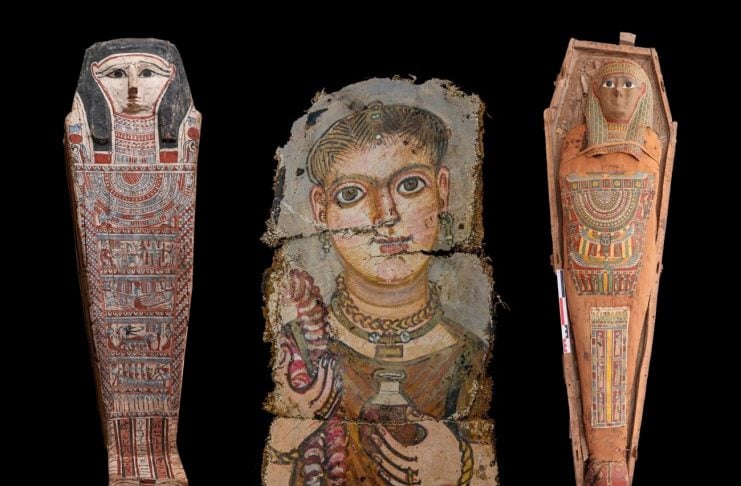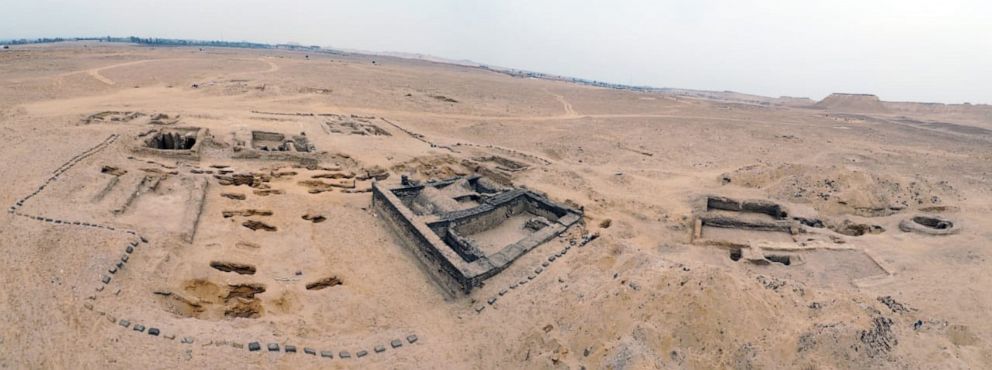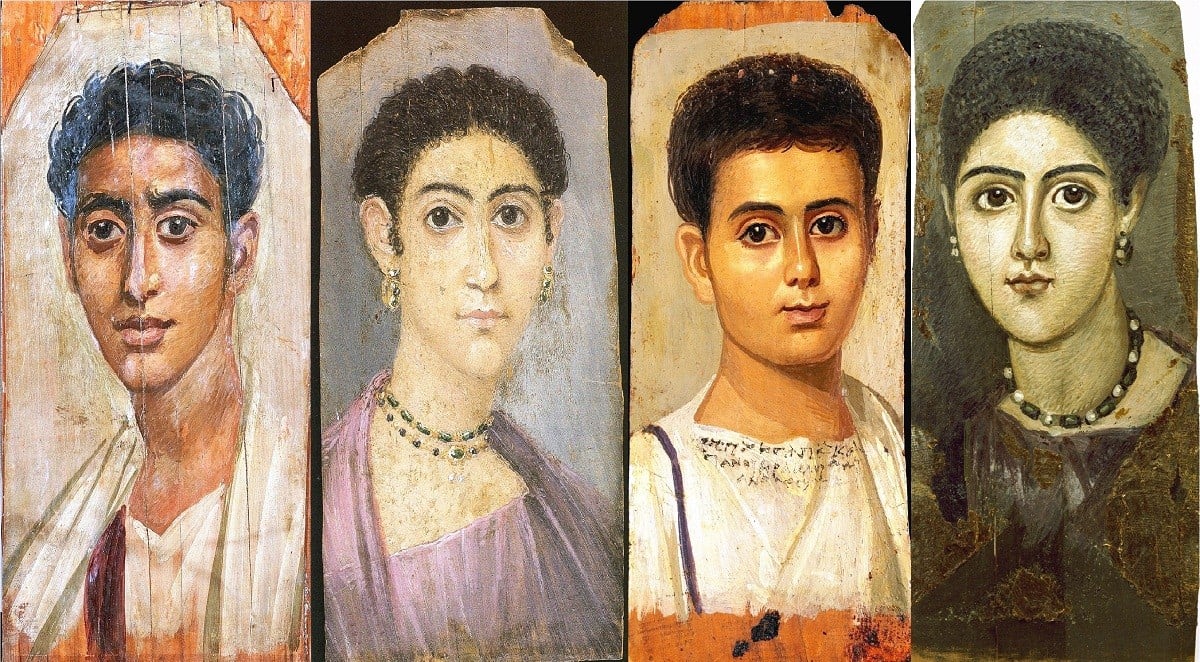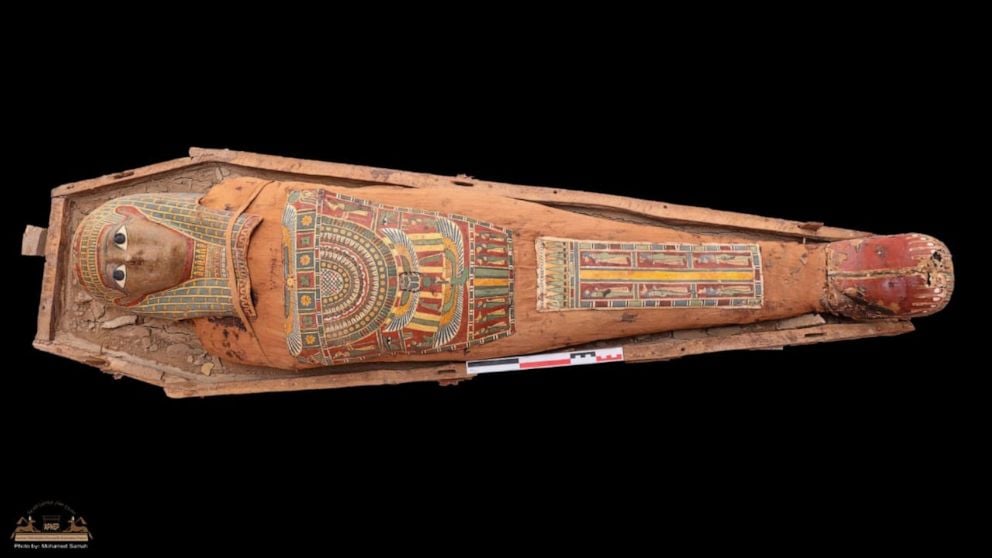
In December 2022, archaeologists made a remarkable discovery in Fayoum, Egypt – a monumental funerary building dating back to the Ptolemaic and Roman periods, along with several stunning Greek mummy portraits.
This is the first time in over 110 years that such significant finds have been unearthed in this region.
The finds, believed to be from the Ptolemaic and Roman periods, were made at the Garza village archaeological site, where experts have been excavating since 2016.

Archaeological finds
Archaeologists discovered a massive funerary building containing several important artifacts at the site.
“The discovered structure is a large building styled as a funerary building with colored gypsum tiled floors,” said Adel Okasha, head of the antiquities department in Cairo and Giza “To the south of it, there is [a] colonnade hall where the remains of four columns were found.”
Among the finds were mummy portraits, also known as Fayoum portraits. These are naturalistic-style portrayals of the deceased painted onto wooden boards to decorate a sarcophagus.
The discovery of the portraits is historically significant. It has been over 110 years since Fayoum-style portraits were last uncovered. The earliest known examples were found in the mid-17th century by the Italian explorer Pietro Della Valle. He discovered a number of mummies with portraits in Saqqara-Memphis, and he brought some of them back to Europe.

The first major excavation of Greek mummy portraits took place in the late 19th century when the British Egyptologist Flinders Petrie uncovered over 100 portraits at a cemetery in Hawara, Egypt. These portraits were found on the faces of mummies, and they are known for their realistic style and their depiction of everyday life in Roman Egypt.
Since then, Greek mummy portraits have been found all over Egypt, and they are now considered to be one of the most important types of art from ancient Egypt. They provide a unique window into the lives of ordinary Egyptians during the Roman period, and they show us how people from different cultures mixed and mingled in this cosmopolitan society.
Researchers noted that the socioeconomic status of the mummies varied, as indicated by the mixed quality of embalming techniques and funerary decorations observed at the site.
Greek and Demotic written records gave the research team further clues as to the economic and religious status of each mummy.
Archaeologists also discovered a terracotta statue of the goddess Isis-Aphrodite. Religious syncretism of this kind was common in ancient Egypt and elsewhere in the Classical world. In this case, the indigenous Egyptian goddess Isis was merged with the Greek goddess Aphrodite.

Fayoum, an ancient city
Fayoum was an important urban center for centuries. The Egyptians of the Old Kingdom (c. 2686–2181 BC) originally called the city Shedet. However, the city’s name changed multiple times due to the many conquerors of Egypt leaving their own cultural traces in the region.
During the conquests of Alexander the Great in the 4th century, Fayoum came under Macedonian Greek rule. One of Alexander’s generals, Ptolemy I Soter, founded his own dynasty in the region shortly after Alexander’s death.
The Greeks initially referred to the city as Krokodilópolis. This was largely due to the crocodile cult of the god Sobek that was popular there. During the Ptolemaic period, the city was first renamed Ptolemais Euergétis and then Arsinoë. Under the Ptolemies, it became a center for the worship of Alexander the Great.
Ptolemaic rule came to an end in 30 BC. The last Ptolemaic ruler was Cleopatra VII Philopator. Cleopatra allied herself with Marc Antony against Octavian (Caesar Augustus) but was defeated, and Egypt came under Roman rule.
Important urban centers like Fayoum continued to be melting pots of the classical Egyptian, Greek, and Roman cultures until the Arab Islamic conquest of Egypt in the 7th century AD.
See all the latest news from Greece and the world at Greekreporter.com. Contact our newsroom to report an update or send your story, photos and videos. Follow GR on Google News and subscribe here to our daily email!



